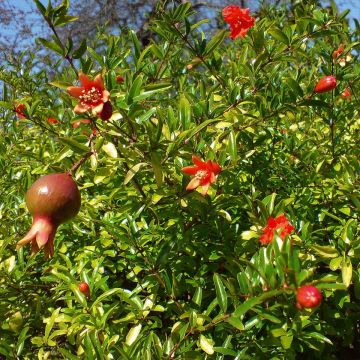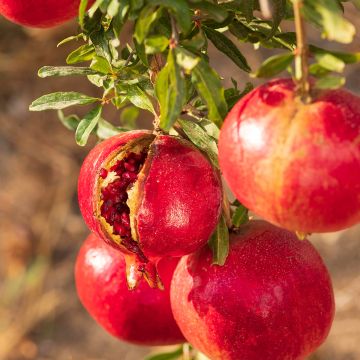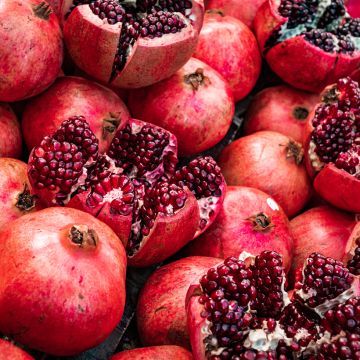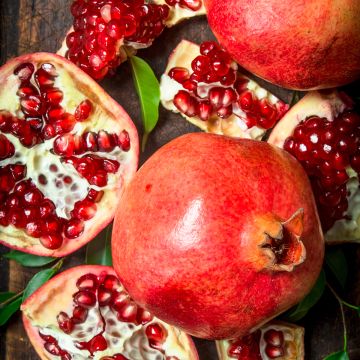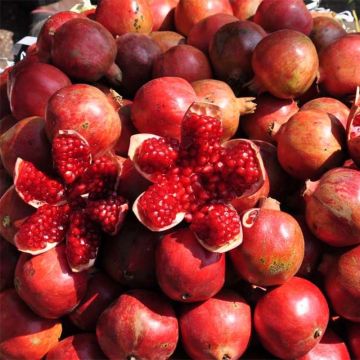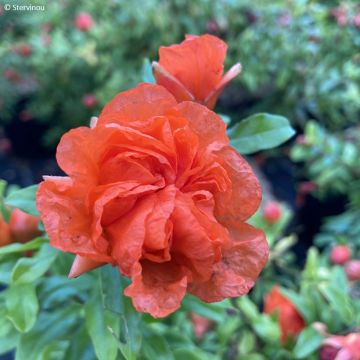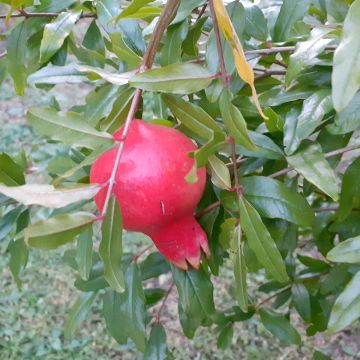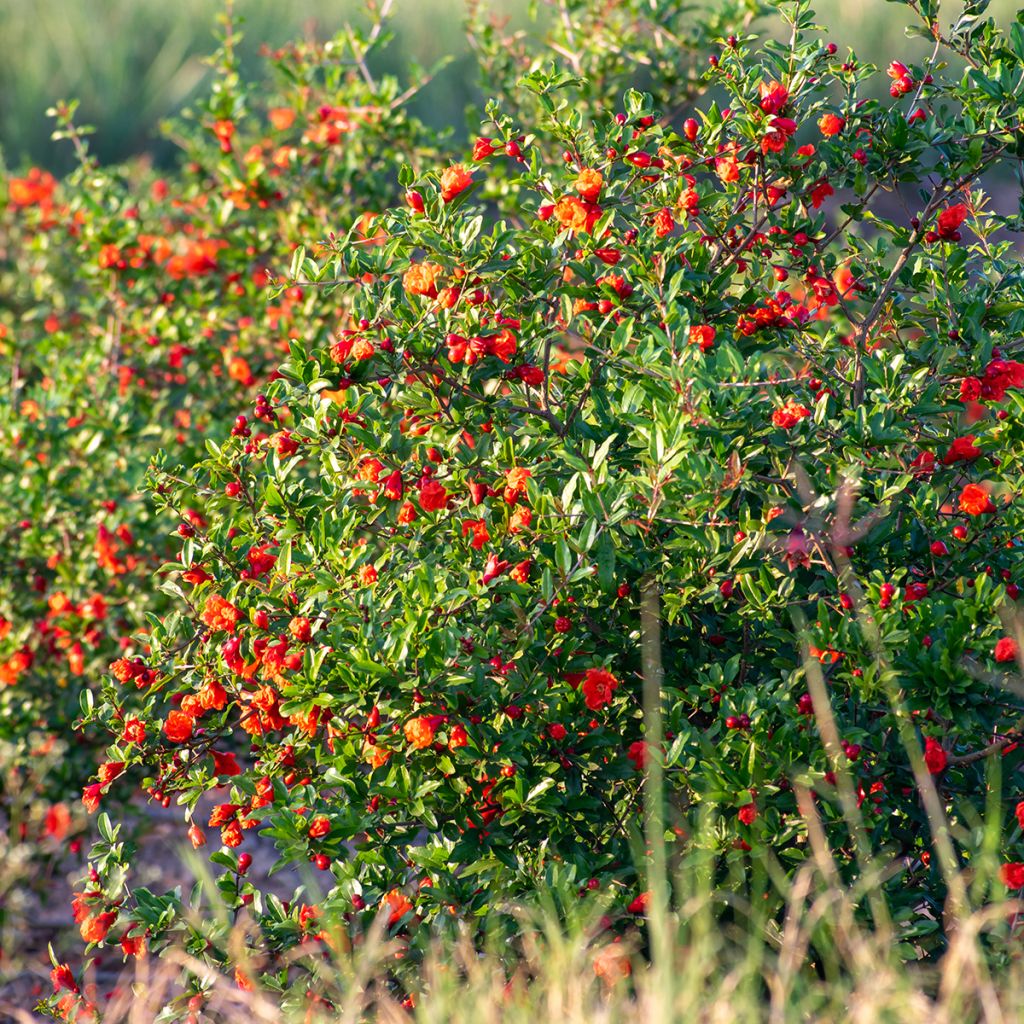

Punica granatum Nana - Pomegranate seeds
Punica granatum Nana - Pomegranate seeds
Punica granatum Nanum
Dwarf Pomegranate
Special offer!
Receive a €20 voucher for any order over €90 (excluding delivery costs, credit notes, and plastic-free options)!
1- Add your favorite plants to your cart.
2- Once you have reached €90, confirm your order (you can even choose the delivery date!).
3- As soon as your order is shipped, you will receive an email containing your voucher code, valid for 3 months (90 days).
Your voucher is unique and can only be used once, for any order with a minimum value of €20, excluding delivery costs.
Can be combined with other current offers, non-divisible and non-refundable.
Home or relay delivery (depending on size and destination)
Schedule delivery date,
and select date in basket
This plant carries a 6 months recovery warranty
More information
We guarantee the quality of our plants for a full growing cycle, and will replace at our expense any plant that fails to recover under normal climatic and planting conditions.
Would this plant suit my garden?
Set up your Plantfit profile →
Description
The pomegranate, also known as Punica granatum or Carthaginian apple, is a small, deciduous, bushy tree that remains attractive throughout most of the year. Indigenous to the Mediterranean basin, it is a heat-loving tree that is still relatively hardy. Its summer striking vermillion summer flowers form a perfect combination with its bright green foliage. Long, hot summers are needed for it to produce large, round fruit filled with sweet, juicy, flesh. The foliage takes on a lovely golden hue in autumn. This generous shrub is very undemanding regarding the soil and very drought-resistant. Older pomegranates often have a twisted trunk with cracked grey-brownish bark that peels off in flakes.
The origins of the pomegranate probably lie in a vast region covering South-Eastern Europe and extending eastwards to the Himalayas. Curiously, this small deciduous tree of the Lythraceae family is related to the purple loosestrife (Lythrum salicaria) that is so commonly widespread along waterways. It has been cultivated since ancient times for its fruit and magnificent blooms. It forms a slightly thorny bush of tangled twigs in its youth, showing fairly rapid growth until it can start bearing fruit after 5 years of age. The adult plant develops at a much slower rate, forming a small tree measuring 4 m high and 3 m wide after a few years, with a spreading, rounded growth habit. It evolves from a clump to a tree on a twisted trunk, with a charm similar to olive trees. It blooms profusely in June-July, becoming more sporadic throughout the summer. The flowers are made up of wrinkled petals emerging from a thick, waxy calyx which already resembles the pomegranate to come. They take on an intense vermilion hue under the summer sun, forming a perfect chromatic match with the lively, glossy, intense green foliage. In favourable weather conditions, pomegranates ripen at the end of October or early November. They are large round, 10 to 15 cm diameter, yellow to orange-pink fruits. They contain many light pink to red berries featuring a more or less, acidic or sweet pulp, all tightly packed within the thick skin. The foliage turns bright yellow before disappearing in autumn.
The pomegranate is a symbol of fertility and abundance, a magnificent specimen plant for a warm position. Hardy down to -12/-15 °C, it will grow without any problem wherever olive and fig trees manage to grow. It can also be used as a hedge if pruned regularly. Planted in a large pot along with citrus fruits and oleanders, it will reign over the terrace. Growing in a container allows the fruit to reach full maturity in all sunny regions, by overwintering the tree in a very bright, warm room.
Report an error about the product description
Flowering
Foliage
Plant habit
Botanical data
Punica
granatum
Nanum
Lythraceae
Dwarf Pomegranate
Cultivar or hybrid
Other Punica - Pomegranate
View all →Planting and care
Sow pomegranate seeds from February to May at around 20 to 30 °C on the surface of a well-drained seed mix. Cover with a very thin layer of potting soil or vermiculite and place in a propagator or polythene bag. The seeds must be kept in the dark until germination, which may take 1 to 4 months.
Plant the seedlings out, after any risk of frost, taking care to leave 30 cm between each plant. The soil should be moist, but well drained and it should be planted in a sheltered position, in full sun.
Pomegranate is at home in any ordinary, deep, well-drained soil. It tolerates chalky and stony soils well. When it is planted outside in colder regions, it is essential to protect the trees from frost, especially when they are still young. To obtain a good harvest, however, it must grow in soil which is not too poor and the summer must be long and hot. Water is necessary to allow the fruit to fill with juice. But overwatering when the fruit ripens (in October-November) is detrimental, as it can cause it to burst.
Sowing period
Intended location
This item has not been reviewed yet - be the first to leave a review about it.
Haven't found what you were looking for?
Hardiness is the lowest winter temperature a plant can endure without suffering serious damage or even dying. However, hardiness is affected by location (a sheltered area, such as a patio), protection (winter cover) and soil type (hardiness is improved by well-drained soil).

Photo Sharing Terms & Conditions
In order to encourage gardeners to interact and share their experiences, Promesse de fleurs offers various media enabling content to be uploaded onto its Site - in particular via the ‘Photo sharing’ module.
The User agrees to refrain from:
- Posting any content that is illegal, prejudicial, insulting, racist, inciteful to hatred, revisionist, contrary to public decency, that infringes on privacy or on the privacy rights of third parties, in particular the publicity rights of persons and goods, intellectual property rights, or the right to privacy.
- Submitting content on behalf of a third party;
- Impersonate the identity of a third party and/or publish any personal information about a third party;
In general, the User undertakes to refrain from any unethical behaviour.
All Content (in particular text, comments, files, images, photos, videos, creative works, etc.), which may be subject to property or intellectual property rights, image or other private rights, shall remain the property of the User, subject to the limited rights granted by the terms of the licence granted by Promesse de fleurs as stated below. Users are at liberty to publish or not to publish such Content on the Site, notably via the ‘Photo Sharing’ facility, and accept that this Content shall be made public and freely accessible, notably on the Internet.
Users further acknowledge, undertake to have ,and guarantee that they hold all necessary rights and permissions to publish such material on the Site, in particular with regard to the legislation in force pertaining to any privacy, property, intellectual property, image, or contractual rights, or rights of any other nature. By publishing such Content on the Site, Users acknowledge accepting full liability as publishers of the Content within the meaning of the law, and grant Promesse de fleurs, free of charge, an inclusive, worldwide licence for the said Content for the entire duration of its publication, including all reproduction, representation, up/downloading, displaying, performing, transmission, and storage rights.
Users also grant permission for their name to be linked to the Content and accept that this link may not always be made available.
By engaging in posting material, Users consent to their Content becoming automatically accessible on the Internet, in particular on other sites and/or blogs and/or web pages of the Promesse de fleurs site, including in particular social pages and the Promesse de fleurs catalogue.
Users may secure the removal of entrusted content free of charge by issuing a simple request via our contact form.
The flowering period indicated on our website applies to countries and regions located in USDA zone 8 (France, the United Kingdom, Ireland, the Netherlands, etc.)
It will vary according to where you live:
- In zones 9 to 10 (Italy, Spain, Greece, etc.), flowering will occur about 2 to 4 weeks earlier.
- In zones 6 to 7 (Germany, Poland, Slovenia, and lower mountainous regions), flowering will be delayed by 2 to 3 weeks.
- In zone 5 (Central Europe, Scandinavia), blooming will be delayed by 3 to 5 weeks.
In temperate climates, pruning of spring-flowering shrubs (forsythia, spireas, etc.) should be done just after flowering.
Pruning of summer-flowering shrubs (Indian Lilac, Perovskia, etc.) can be done in winter or spring.
In cold regions as well as with frost-sensitive plants, avoid pruning too early when severe frosts may still occur.
The planting period indicated on our website applies to countries and regions located in USDA zone 8 (France, United Kingdom, Ireland, Netherlands).
It will vary according to where you live:
- In Mediterranean zones (Marseille, Madrid, Milan, etc.), autumn and winter are the best planting periods.
- In continental zones (Strasbourg, Munich, Vienna, etc.), delay planting by 2 to 3 weeks in spring and bring it forward by 2 to 4 weeks in autumn.
- In mountainous regions (the Alps, Pyrenees, Carpathians, etc.), it is best to plant in late spring (May-June) or late summer (August-September).
The harvesting period indicated on our website applies to countries and regions in USDA zone 8 (France, England, Ireland, the Netherlands).
In colder areas (Scandinavia, Poland, Austria...) fruit and vegetable harvests are likely to be delayed by 3-4 weeks.
In warmer areas (Italy, Spain, Greece, etc.), harvesting will probably take place earlier, depending on weather conditions.
The sowing periods indicated on our website apply to countries and regions within USDA Zone 8 (France, UK, Ireland, Netherlands).
In colder areas (Scandinavia, Poland, Austria...), delay any outdoor sowing by 3-4 weeks, or sow under glass.
In warmer climes (Italy, Spain, Greece, etc.), bring outdoor sowing forward by a few weeks.






























